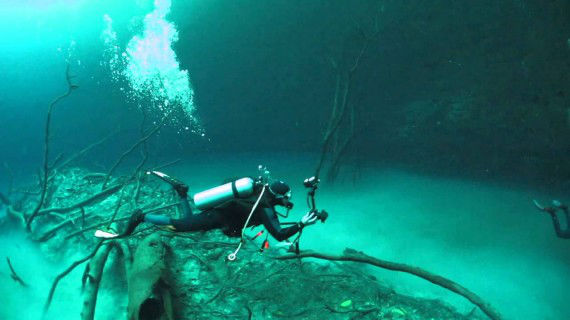There Exists an Underwater River in Mexico and Its Pictures Will Leave You Stunned!
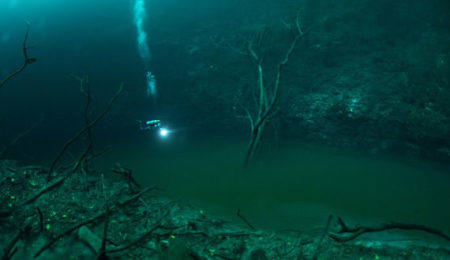
Lying on the east coast of Mexico’s Yucatan Peninsula, the Cenote Angelita (“Little Angel” in Spanish) is a sight for sore eyes, attracting scuba divers from across the world who visit for a dive, and for the breathtaking visions that the Angelita has to offer, which, until recently, included all the things that scuba divers usually encounter.
But the Angelita, it was recently discovered, had something else in store.
Before we proceed any further, let’s get a few things cleared up: a cenote – which is what the Angelita is – is a deep sinkhole which is formed as a result of limestone bedrocks collapsing and exposing the groundwater or accumulated rainwater underneath. As a result of this, the water in a cenote is crystal clear. Cenotes can measure up to 10 meters in diameter and are several feet deep, and can have vast underground cave systems which can stretch up to several kilometers. Moreover, having been used by the Mayans as a source of water, and often having spiritual qualities attributed to it, cenotes are rich mines for archeological finds; several invaluable Mayan artefacts, which they were believed to have been thrown into the cenotes have surfaced.
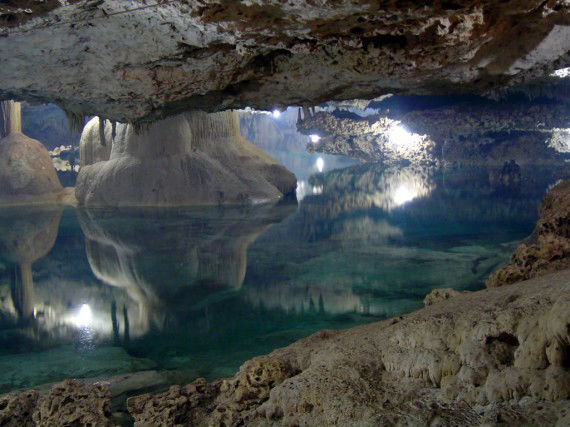
The Cenote Angelita possesses all the aforementioned traits, and then some, as photographer Anatoly Beloshchin discovered: it’s about 180 ft deep, and incorporates both freshwater and saltwater in its folds. While diving in the Angelita, he chanced upon an “underwater river” situated about 90 ft below the surface of the cenote, complete with rocky shores, fallen trees and leaves.
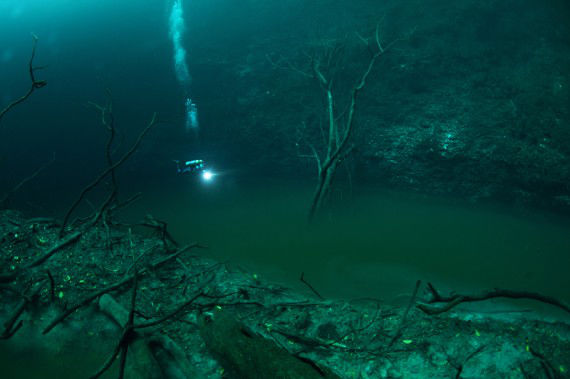
Allow us to explain: the underwater river is not so much a river as a testimony to differences in densities of saltwater and freshwater. In case of the “river” in Angelita – which, as mentioned previously, is a mixture of saltwater and freshwater – the higher density of the saltwater causes it to sink below the freshwater, which rises up and forms a layer over the saltwater – a phenomenon called a halocline, within which is contained a thin layer of hydrogen sulphate, which is heavy enough to be able to move independently in the water surrounding it, making it look like currents in a river. Adding to the illusion are fallen leaves and the likes atop the layer – a result of the collapse of the limestone bedrocks – giving the impression that they are floating on the surface or are washed up on the banks. Divers can swim through the layer, and onto the other saltwater side and view the flowing river atop them.
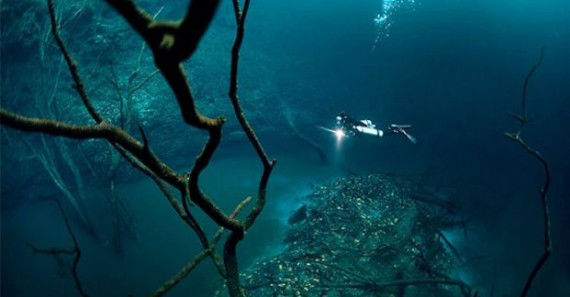
This unique characteristic of the cenote makes it a diver’s paradise, with scuba divers and cave divers collecting in large numbers to explore the wonders the Angelita has to offer.
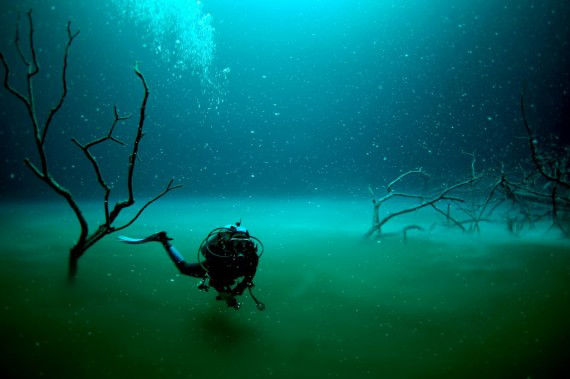
These pictures clicked by Anatoly Beloshchin are a clear testament to the magnificence of the cenote and its hidden “river”, and we are pretty sure that, had we not told you, you would undoubtedly have mistaken it for a real river. And really, how can we blame you?
[source: mysteriousuniverse.org]














